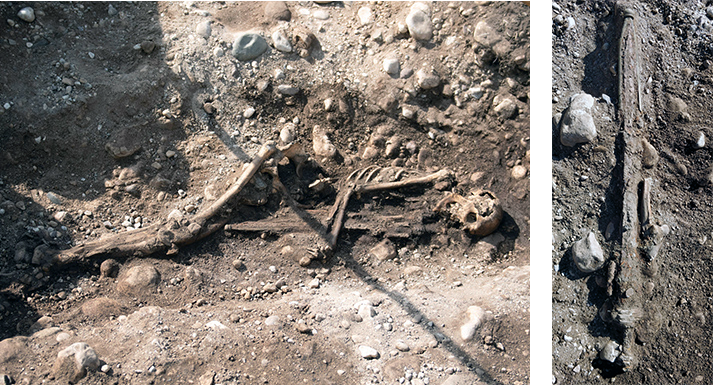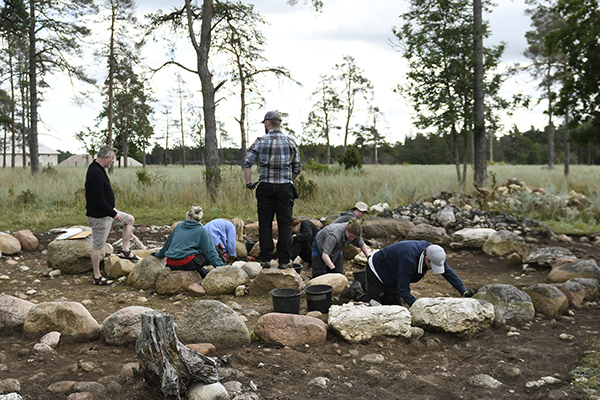How did it feel to be involved in such a major and unusual find during a lesson?
“Absolutely marvellous, interesting and also very instructive, both regarding how to conduct a dig and how a media presence affects one’s work,” says Alexander Andreeff-Högfeldt, lecturer in archaeology at the Department of Archaeology and Ancient History and leader of the excavation lectures at Buttle Änge on Gotland.
“That said, for an archaeologist it’s not the specific find that’s important but rather the new knowledge it may provide,” he clarifies.
What does the find mean to the programme and the students?
“Naturally, the find captures the public interest in archaeology and, hopefully, attracts students to study archaeology, whether in Uppsala or on Gotland.”
What are the scientific implications of the discovery?
“Now begins the important work of analysing the skeleton and artefacts and it will be exciting to see how these can contribute to our knowledge, of Buttle as a site specifically, but more generally about Gotland during the early Iron Age,” says Alexander Andreeff-Högfeldt.

The man in the grave was lying in a foetal position, embracing a well-preserved, approximately 80 cm long Roman cavalry sword (pictured in it´s entirety in the image to the right) and wearing a pair of decorated silver spurs, suggesting that he was a cavalryman. The weapon and equipment can be dated to the Roman Iron Age (1–400 CE). Photo: Alexander Roesen Sjöstrand.
